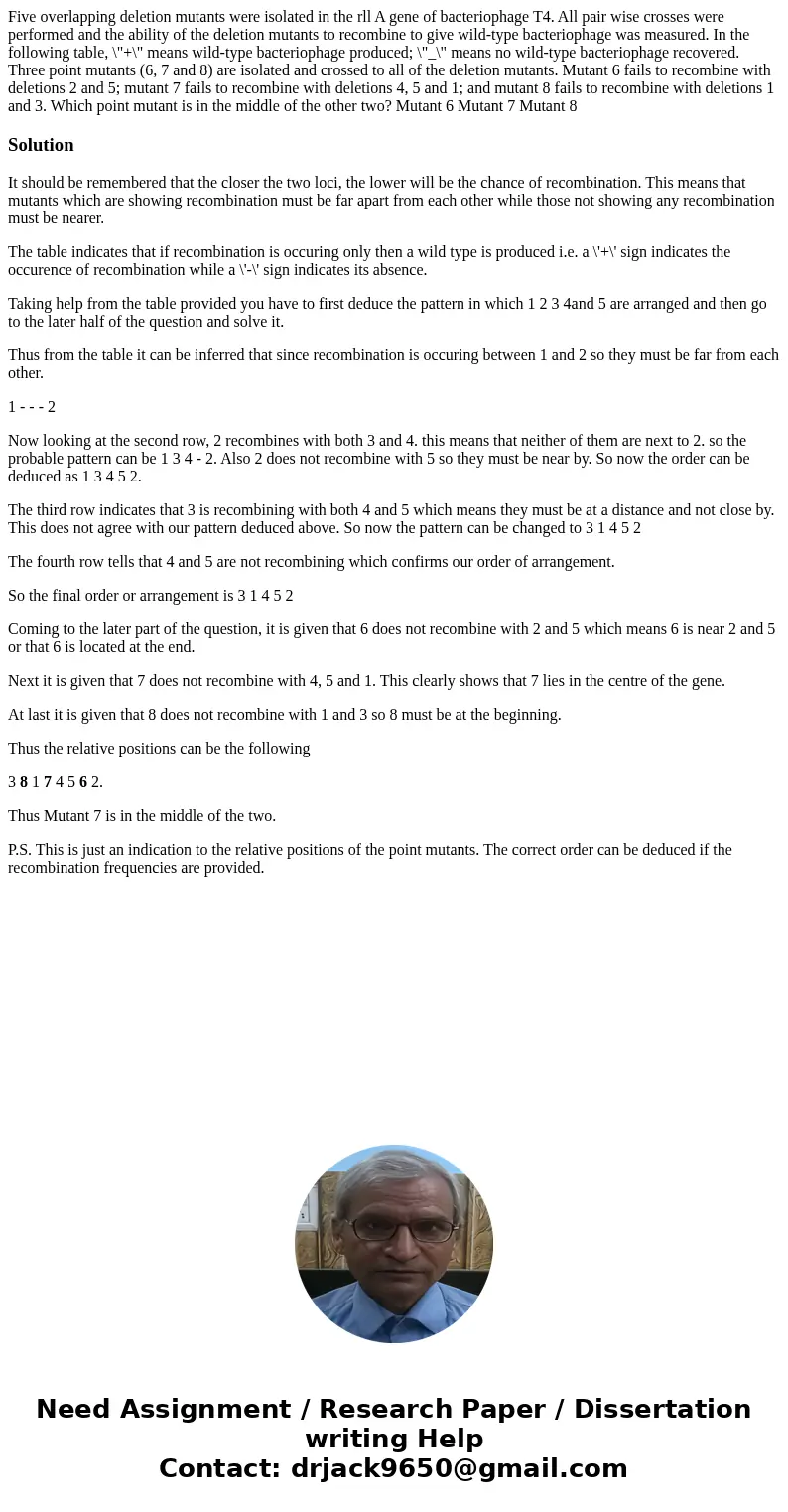Five overlapping deletion mutants were isolated in the rll A
Solution
It should be remembered that the closer the two loci, the lower will be the chance of recombination. This means that mutants which are showing recombination must be far apart from each other while those not showing any recombination must be nearer.
The table indicates that if recombination is occuring only then a wild type is produced i.e. a \'+\' sign indicates the occurence of recombination while a \'-\' sign indicates its absence.
Taking help from the table provided you have to first deduce the pattern in which 1 2 3 4and 5 are arranged and then go to the later half of the question and solve it.
Thus from the table it can be inferred that since recombination is occuring between 1 and 2 so they must be far from each other.
1 - - - 2
Now looking at the second row, 2 recombines with both 3 and 4. this means that neither of them are next to 2. so the probable pattern can be 1 3 4 - 2. Also 2 does not recombine with 5 so they must be near by. So now the order can be deduced as 1 3 4 5 2.
The third row indicates that 3 is recombining with both 4 and 5 which means they must be at a distance and not close by. This does not agree with our pattern deduced above. So now the pattern can be changed to 3 1 4 5 2
The fourth row tells that 4 and 5 are not recombining which confirms our order of arrangement.
So the final order or arrangement is 3 1 4 5 2
Coming to the later part of the question, it is given that 6 does not recombine with 2 and 5 which means 6 is near 2 and 5 or that 6 is located at the end.
Next it is given that 7 does not recombine with 4, 5 and 1. This clearly shows that 7 lies in the centre of the gene.
At last it is given that 8 does not recombine with 1 and 3 so 8 must be at the beginning.
Thus the relative positions can be the following
3 8 1 7 4 5 6 2.
Thus Mutant 7 is in the middle of the two.
P.S. This is just an indication to the relative positions of the point mutants. The correct order can be deduced if the recombination frequencies are provided.

 Homework Sourse
Homework Sourse